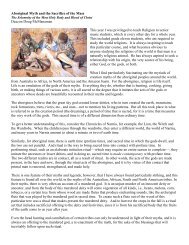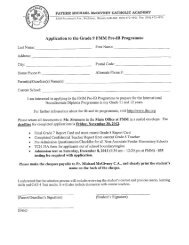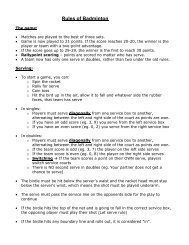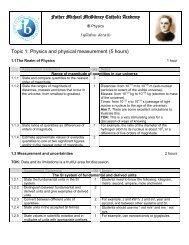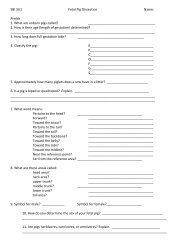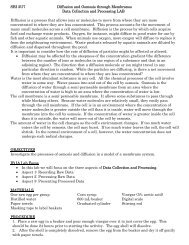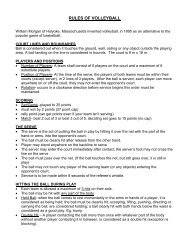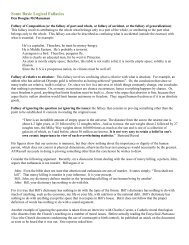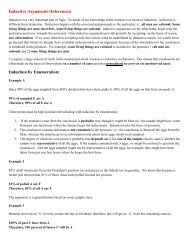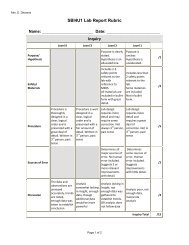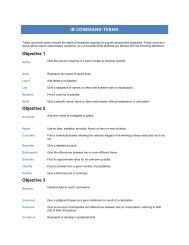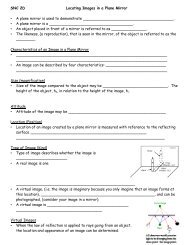Chemistry Review Manual 2
Chemistry Review Manual 2
Chemistry Review Manual 2
You also want an ePaper? Increase the reach of your titles
YUMPU automatically turns print PDFs into web optimized ePapers that Google loves.
neutral in water, as they do not react with water. However, F − is the weak base<br />
conjugate to the weak acid, HF. It will react with water via<br />
F − (aq) + H 2 O(l) HF(aq) + OH − (aq)<br />
to sufficient extent to make the solution noticeably basic.<br />
(b) NH 4 Cl will produce an acidic solution. NH 4 Cl is an ionic material that dissolves in<br />
water to form NH 4 + (aq) and Cl − (aq). Cl − is a very weak base - it is conjugate to a strong<br />
acid. It does not react to noticeable extent with water – i.e., we can say that it is not a<br />
base. However, NH 4 + is the weak acid conjugate to the weak acid, NH 3 . It will react with<br />
water via<br />
NH 4 + (aq) + H 2 O(l) NH 3 (aq) + H 3 O + (aq)<br />
to sufficient extent to make the solution noticeably acidic.<br />
(c) KBr will produce a neutral solution. Neither K + (a Group 1 cation), not Br − , reacts with<br />
water to a noticeable extent. Br − is the very weak base conjugate to the strong acid, HBr.<br />
(d) CH 3 NH 3 Cl will produce an acidic solution. This is an ionic material that dissolves in<br />
water to form CH 3 NH 3 + (aq) and Cl − (aq). Cl − does not react with water – see part (b)<br />
above. CH 3 NH 3 + is the weak acid conjugate to the weak acid, CH 3 NH 2 . It will react with<br />
water via<br />
CH 3 NH 3 + (aq) + H 2 O(l) CH 3 NH 2 (aq) + H 3 O + (aq)<br />
to sufficient extent to make the solution noticeably acidic.<br />
(e) NaOCl will produce a basic solution. NaOCl dissolves in water to form Na + (aq) and<br />
OCl − (aq). Na + (a Group 1 cation) does not react with water. However, OCl − is the weak<br />
base conjugate to the weak acid, HOCl. It will react with water via<br />
OCl − (aq) + H 2 O(l) HOCl(aq) + OH − (aq)<br />
to sufficient extent to make the solution noticeably basic.<br />
3.5 The requested chemical equilibria are shown in the solution to question 3.4. The shifts in<br />
the equilibria are indicated by the size of the forward and reverse arrows.<br />
Page 30 of 88



